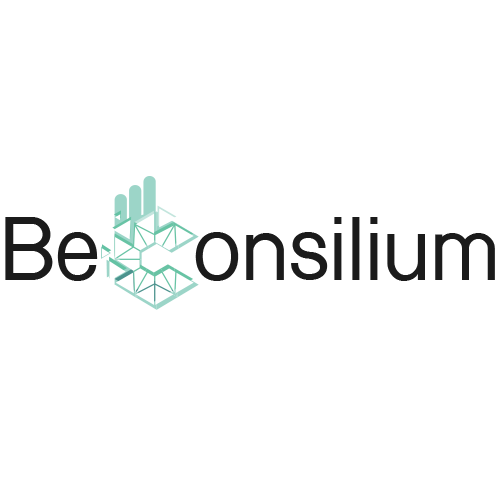Article Summary
Central Issue: On October 6, 1984, 56 professionals attempted the very first Project Management Professional (PMP) exam. Only 43 succeeded¹. Forty years later, this certification, held by over a million professionals in 217 countries², defines global project management standards. How did a vision born in a Philadelphia restaurant create the most cross-functional profession in the business world?
What you will discover in this article:
- The three decisive moments that shaped the modern PMP certification
- Why 86% of professionals were demanding certification as early as 1983³
- How the 40-50% first-attempt failure rate paradoxically strengthens the PMP’s value⁴
- Strategic lessons for Quebec organizations in the face of the standard’s continuous evolution
On January 29, 1968, E.A. “Ned” Engman of McDonnell Douglas Automation drafted a letter that would forever change the global professional landscape. Addressed to five colleagues, this correspondence posed a revolutionary question: “What if we created an organization for project managers?”
This seemingly simple question concealed a complex reality. In the aerospace, construction, and defense industries of the 1960s, projects were gaining technical sophistication, but no unified professional standard existed. Each organization developed its own methodologies, creating a patchwork of practices that limited collective efficiency and hindered professional recognition.
Fifty-six years later, this initial vision gave birth to the PMP® certification, held by over a million professionals in 217 countries and territories, transforming project management from an improvised art into a recognized scientific discipline.
The Global Transformational Impact
The industry of the 1960s faced an unprecedented challenge. Apollo projects, massive civil infrastructure, and defense programs were reaching unprecedented levels of complexity. Yet, the management of these initiatives relied on improvisation and intuition rather than proven methods.
This lack of standardization created several critical dysfunctions. Project teams spoke different languages depending on their originating organizations. A “milestone” could mean ten different things depending on the industrial context. The transfer of best practices became impossible, with each company perpetually reinventing the same solutions.
The training of project managers reflected this anarchy. Some acquired their skills through pure experience, while others followed ad hoc internally developed training. No certification validated their achievements, and no framework structured their professional progression.
This situation particularly penalized professional mobility. A manager trained at Boeing could not easily join General Electric, as their methodologies were incompatible. Expertise remained compartmentalized, limiting exchanges and slowing down methodological innovation.
The absence of an organized professional body also prevented any institutional representation. Project management did not exist as a recognized academic discipline, depriving the sector of structured research and theoretical development.
The PMP® certification transforms individual expertise into institutional recognition across three strategic dimensions. Certified professionals gain access to a universal methodological language, validated by PMBOK standards recognized by the American National Standards Institute and adopted by ISO in 2012.
Statistical evolution testifies to massive adoption: 6,199 members in 1989, over a million certified professionals in 2020. This geometric progression demonstrates continued relevance in the face of industrial transformations.
Institutional recognition culminated in 2007 with ANSI/ISO/IEC 17024 accreditation, confirming international methodological rigor. Today, PMI serves over five million professionals through 680,000 members in 217 countries, creating a truly global professional ecosystem.
The Birth of a Profession (1968-1984)
The Methodological Anarchy of the 1960s
The Initial Spark: the Story of the Three Threes Restaurant
In early 1969, three men dined at the Three Threes Restaurant, an intimate establishment located a few blocks from Philadelphia City Hall⁵. James Snyder of SmithKline & French Laboratories and Gordon Davis of the Georgia Institute of Technology extended discussions that had begun several months prior⁶. A storm prevented one of them from going directly to the airport after work⁷. This meteorological coincidence would transform the history of business management.
The conversation crystallized a shared frustration: in the aerospace, construction, and defense industries, projects were gaining technical complexity, but each organization perpetually reinvented the same solutions⁸. No common language existed. A “milestone” could mean ten different things depending on the industrial context. The transfer of best practices became impossible.
The Founders: Multi-Sectoral Legitimacy
On October 9, 1969, the first formal meeting was held at the Georgia Institute of Technology in Atlanta⁹. Eighty people attended the inaugural dinner¹⁰. The articles of incorporation were filed in Pennsylvania, signed by five visionaries¹¹:
James R. Snyder – The “Father of PMI”, he literally transformed his kitchen table into the headquarters during the early years¹². A manager at SmithKline & French Laboratories, he would serve as a volunteer executive director, president, and chairman of the board.
Eric Jenett – Vice President at Brown & Root, he brought legitimacy from the construction sector. He would become the first official holder of the PMP certification (certificate number 1)¹³, PMI president in 1971, and chairman in 1972¹⁴.
J. Gordon Davis, PhD – Professor at the Georgia Institute of Technology, he ensured the crucial academic dimension and coordinated the first university partnerships¹⁵. He challenged members to “make project management a recognized profession in its own right”¹⁶.
E.A. “Ned” Engman – National Representative at McDonnell Douglas Automation, he had sent invitation letters as early as 1968 to create this organization¹⁷. The initial visionary who planted the seed.
Susan C. Gallagher – Project Manager at SmithKline & French Laboratories with Snyder, she actively participated in the initial structuring and would serve as Treasurer and Vice President of Technical Services¹⁸.
This sectoral diversity—pharmaceutical, construction, academic, aerospace—guaranteed the universal relevance of the developed standard from the outset.
1975-1983: the Methodical Construction of a Standard
The Formalized Objectives
In 1975, PMI officially articulated its objectives¹⁹:
- Promote professionalism in project management
- Provide a forum for exchanging problems and solutions
- Coordinate industrial and academic research efforts
- Develop common terminology and techniques
- Create interfaces between users and system providers
The Decisive Moment: the 1983 Study
In 1981, at Matthew H. Parry’s suggestion, a team developed ethics and accreditation standards²⁰. But it was the December 1983 report in the Project Management Quarterly that changed everything: 86% of surveyed PMI members favored a certification program²¹.
This massive consensus validated two decades of effort. Professionals no longer merely wanted to exchange practices—they demanded formal recognition of their expertise. The detailed March 1984 report in the Project Management Journal defined the certification process across three areas: education, experience, and service²².
October 6, 1984: the Birth of the PMP
The First Exam: a Revealing Pass Rate
On October 6, 1984, at the PMI ’84 congress in Philadelphia, history took a turn. Fifty-six experienced professionals took the first PMP exam²³. Forty-three passed, establishing an initial pass rate of 76.8%²⁴.
This high rate reflected two realities:
- The rigorous selection of initial candidates—all possessed substantial experience
- The absence of standardized preparation material—only field experience mattered
Eric Jenett, co-founder of PMI, symbolically received certificate number one²⁵, embodying the continuity between initial vision and practical realization.
The Evolution of the PMBOK: from 8 Pages to 598 Pages
The Project Management Body of Knowledge (PMBOK) had humble beginnings:
- 1987: First version with eight sections of 6 pages each²⁶
- 1996: First official edition of the PMBOK Guide, 176 pages, 37 processes²⁷
- 2000: Second edition, 211 pages, 39 processes²⁸
- 2004: Third edition, 290 pages, 44 processes²⁹
- 2012: Fifth edition, 598 pages, 47 processes³⁰
This documentary expansion reflects the growing sophistication of the discipline and the integration of new methodologies.
The Contemporary Legacy: Strategic Lessons
The history of the PMP® offers valuable lessons for contemporary organizations. The transformation of an individual vision into a global standard illustrates how methodological innovation creates sustainable competitive advantages.
The strategic patience of the founders deserves attention: sixteen years separate Engman’s letter from the first exam. This timeframe reflects the need to build a solid professional consensus before formalizing standards.
The personal investment of the founders exceeded typical commitment. Snyder transformed his home into the headquarters, illustrating how transformative innovations demand exceptional sacrifices to create collective legitimacy.
The PMP® certification resolved the fundamental challenge of the era: how to transform tacit expertise into explicit recognition. This issue remains relevant for any professional seeking to formalize their operational excellence according to recognized standards.
Continuous Evolution: Contemporary Challenges
The certification continues to evolve in the face of contemporary transformations. The progressive integration of agile methodologies, artificial intelligence, and distributed teams redefines the required competencies, demonstrating the initial standard’s adaptability.
Increasing globalization paradoxically strengthens the value of the PMP® standard. The more international and virtual teams become, the more crucial a common methodological language becomes for collective efficiency.
- Vision Precedes Structure: Fifteen years of gestation created a global standard
- Diversity Forges Universality: Five founders from four different industries
- Evolution is Constant—From 8 pages in 1987 to AI integration today
An Invitation to Dialogue:
Does your organization value the history and continuous evolution of professional standards? How do you integrate lessons from the past into your skill development strategy?
Check Your Eligibility for PMP® Certification
Ready to Take Action?!
Consult Our References
- Project Management Certification – History of Development, PMI, first exam October 1984
- Project Management Institute Wikipedia, 217 countries and territories
- Project Management Certification Committee Report, PMI, December 1983
- How Hard is the PMP Exam, The Knowledge Academy, 2025
- PMI Founders, Three Threes Restaurant Philadelphia
- PMI History, Snyder-Davis discussions
- PMI Twenty Five Years, storm preventing airport departure
- A History of PMI, ProjectManager.com, 1960s industries
- PMI Founders, first meeting October 9, 1969
- PMI History, 80 people at inaugural dinner
- PMI Founders, five signatories articles of incorporation
- PMI Twenty Five Years, Snyder kitchen table
- PMI Founders, Eric Jenett first PMP
- A History of PMI, Jenett president 1971
- PMI Founders, Davis academic partnerships
- PMI History, Gordon Davis quote
- The Knowledge Academy PMI History, Engman letters 1968
- Easy Project PMI History, Susan Gallagher roles
- Did You Know History of PMI, 1975 objectives
- Project Management Certification Development, Parry suggestion 1981
- Project Management Certification Committee, 86% in favor
- PMJ March 1984, three certification areas
- Project Management Certification, 56 candidates first exam
- Project Management Certification, 43 successes
- Red Learning PMP History, Jenett certificate #1
- The Knowledge Academy PMP Credential, PMBOK 1987
- Edward Designer PMBOK History, first edition 1996
- PMBOK History, second edition 2000
- PMBOK History, third edition 2004
- PMBOK History, fifth edition 2012
- PMI SF Bay Chapter, 1989 statistics
- PMI Wikipedia, one million holders 2020
- PMI SF Bay Chapter, 2022 statistics
- PMI Wikipedia, global presence
- PM Study Circle, 40-50% failure rate
- PMI Salary Survey, salary differential
- PM Study Circle, 61% passing score until 2005
- PM Study Circle, psychometric analysis
- Red Learning, 2003 Agile revision
- PMI Exam Content Outline 2021
- PMI Pulse of Profession 2024
- The Knowledge Academy, 1968-1984 timeline
- PMI Talent Gap Report

